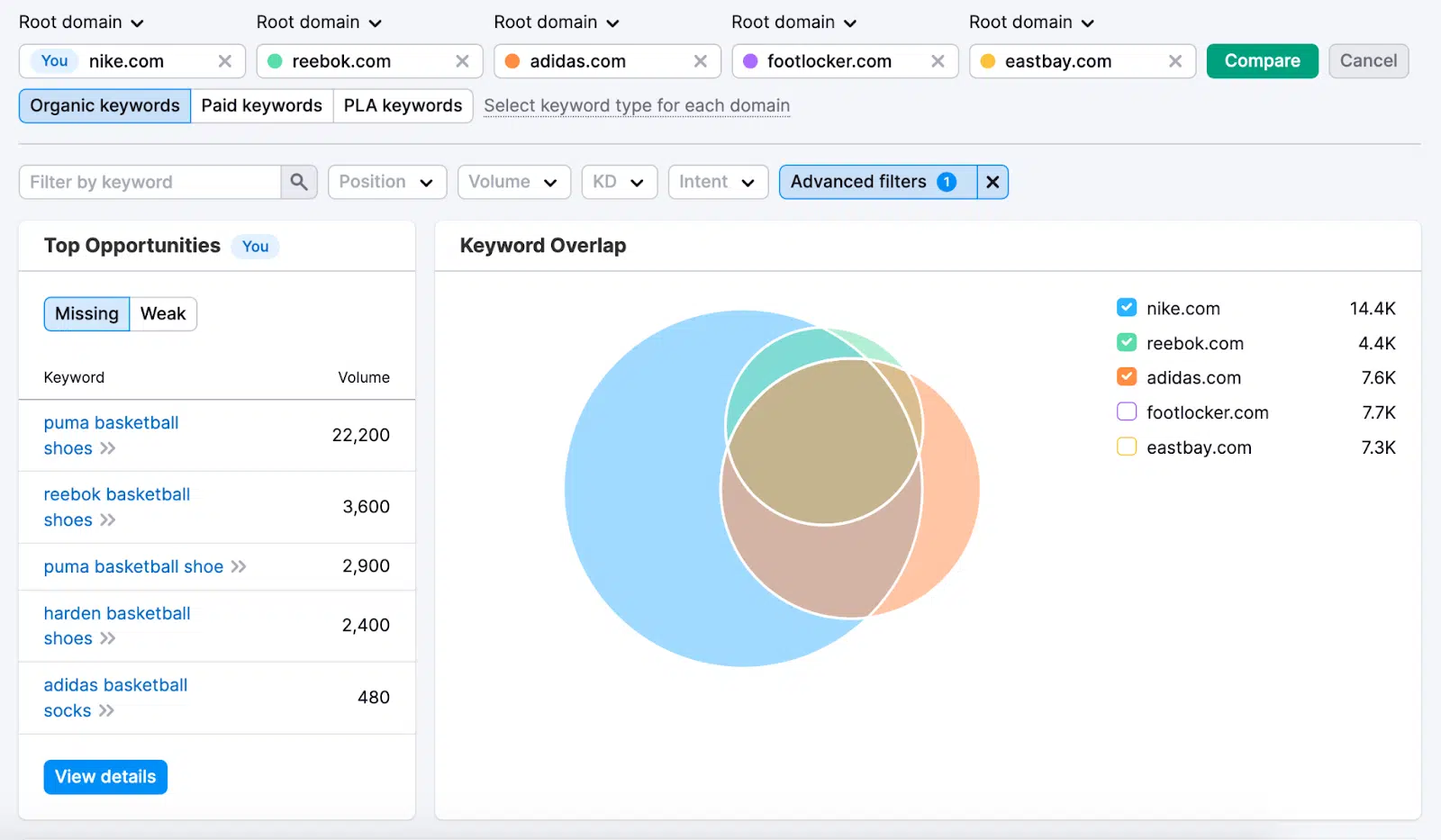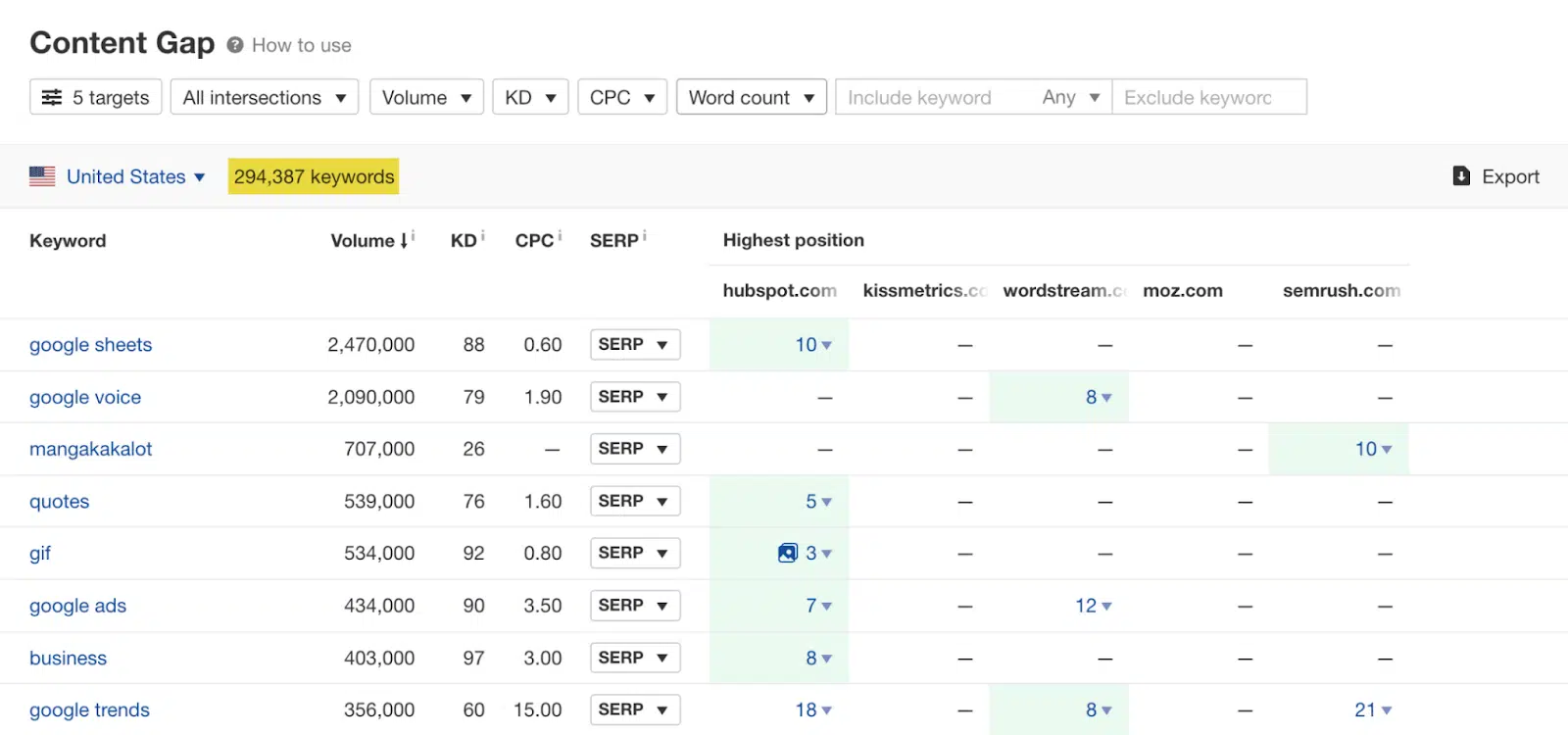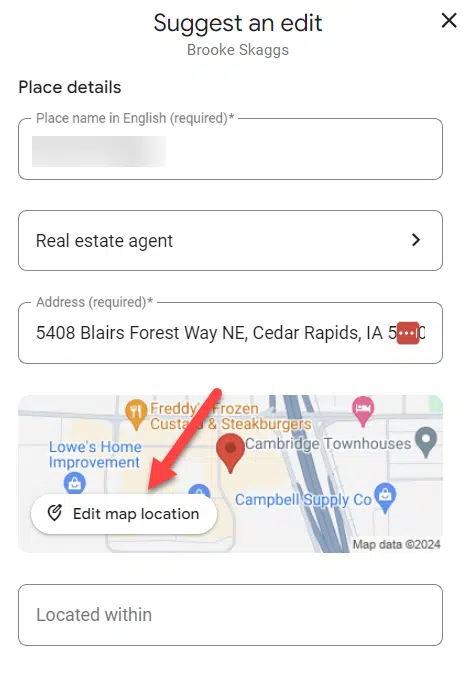A content gap analysis is a valuable type of market research, helping you to discover opportunities you may have missed and improve your content marketing.
But what exactly is a content gap analysis, and how do you do it? And more importantly, why should you?
What is a content gap analysis?
Content gap analysis is the process of identifying and addressing missing or underperforming content on a website, compared to competitors or market standards.
It enhances your content strategy by unearthing areas for improvement to meet your target audience’s needs and improve visibility for SEO.
What are the best tools for content gap analysis?
Semrush, Ahrefs, and Google Search Console are some of the most useful tools for content gap analysis.
- Semrush provides insights into competitors’ content strategies.
- Ahrefs’ Content Gap feature allows for discovering keyword opportunities.
- Google Search Console can be used to spot topics that could be weak or missing from existing content.
Semrush
I find Semrush the easiest and most intuitive tool. It’s simple to use and automatically suggests websites to compare to yours based on keywords in common – useful if this is your first analysis and you’re not sure where to start.
I also like the Venn diagram illustrations of keyword overlap. It’s a simple way to get a visual on how you’re doing so far and how much work or opportunity you have.

Ahrefs
This is another solid SEO tool for seeing what competing websites rank for and helping to find gaps in your content.

There is a limit to the number of results shown depending on the plan you’re on, which is a limitation of Ahrefs. But regardless of the plan you choose, Ahrefs will show the top opportunities for improvements, i.e. those that will make the most difference.
Google Search Console
Search Console is a useful option if you want to improve specific pages and don’t have access to paid tools.
There’s a wealth of data about what’s working on your own site, and you can use information on the organic keywords you already rank for to see if you can make improvements (more on this later).
Get the daily newsletter search marketers rely on.
How to do an SEO gap analysis
Carrying out the analysis is simple. Enter your own URL and one or more competitors, and run the analysis. That’s it.
The more challenging part is selecting the right competitors and interpreting the results. You can use Semrush and Ahrefs by either pulling it automatically or using a separate report to identify close competitors in the SERPs.
I’ve found this works well for ecommerce sites and websites that follow similar patterns. If your industry has no “standard,” it might not provide many useful results.
For example, I discovered that a content gap analysis for a brand strategy agency trying to position itself differently in its market wasn’t very effective.
They had little overlapping content, and their closest competitors approached things differently. In this case, it might not be the right approach for your business. But more often than not, a gap analysis is extremely helpful.
Here are more details on how to get the most out of a content or keyword gap analysis.
Site level
Looking at gaps across a whole site is useful for refining your content strategy. It’s what most of us think of when we consider the analysis. It uncovers what the competitors rank for and provides opportunities for organic traffic.
Enter your site into your preferred keyword gap tool along with the competition, setting each one to domain-level analysis. Assess untapped, weak and missing keywords. You can sort these by volume, keyword difficulty and more to find the most lucrative opportunities for your business.
Extensive keyword lists can be overwhelming, so using a keyword clustering tool to help group similar opportunities can be useful. You can also export a CSV file and use filters to identify opportunities once you spot patterns for yourself.
This type of large-scale analysis can be helpful when you’re creating a longer-term plan and trying to iron out your strategy for the next 6-12 months.
Category level
You can use a URL path analysis to strengthen a particular area of your website, like a set of categories and related subcategories. This will pick up all the relevant opportunities in one URL subset.
Most SEO tools let you run the analysis at the prefix or path level. This can be useful if you want to run an analysis against a section of larger site that does what yours does. You can run your whole domain against the path of the subsection of their site that covers your common products or services.
Check if the competition has any subcategories you might want to consider adding or any informational content supporting certain products.
Carrying out a more focused gap analysis like this can be helpful. You might even choose to run this against competitors who are more successful for a subset of your products or services to help you plan to strengthen a certain area.
Page level
If you want to improve a certain page on your site, you can compare it with those currently performing better. This is a quick way to find the relevant keywords that you’re missing and make an optimization plan. Just follow the same process at the page level.
If you have limited access to paid tools, this is where Search Console can be useful. You can assess the keywords your page is ranking for and dedicate time to improving results for under-performing keywords.
You’re likely to identify themes you could cover in more detail or haven’t touched on. Use these insights to improve your content.
Why is content gap analysis important in 2024 and beyond?
Evaluating content gaps isn’t about copying your competitors or stealing their strategy.
An effective content gap analysis helps you to refine your content and keyword strategy to meet the needs of your target audience, and can help to improve search engine results in the process.
Here are five reasons why this type of analysis must be part of your strategy in 2024 and beyond.
It helps you to create better content, fast
Assessing the market can help you identify content ideas you might not have considered and evaluate which will likely be the most successful.
This saves time and effort and helps you to create content that delivers results. And Google asks website owners to consider that:
“The “why” should be that you’re creating content primarily to help people, content that is useful to visitors if they come to your site directly.”
So, using an evaluation of what is already genuinely helping people in your market is a great place to start.
You can continuously improve
Regularly revisiting your content compared to other articles or pages that have been published or improved since you published yours will help you make modifications over time.
Your top competitors might have changed because new, current or different information about a topic has become more relevant to your audience. Or perhaps users are simply expecting a higher level of detail, additional insight, or expertise.
Reviewing your content in this context helps you easily spot areas you can improve and create the best piece on a topic.
This helps you to fulfill Google’s helpful content criteria:
- “Does the content provide substantial value when compared to other pages in search results?”
You can better fulfill needs and intent
By analyzing keyword gaps and missing topics in your content, you can often uncover where you might be overlooking your potential customers’ needs or intent.
This can help you align your content with what they’re looking for, creating something better, more useful and ultimately more successful.
So, you should be able to ask yourself:
- “After reading my content, will someone leave feeling they’ve learned enough about a topic to help achieve their goal?”
And if you’ve better satisfied the search intent, your answer will be yes!
You can demonstrate expertise
The more you write about a topic, the more you can demonstrate the depth and breadth of your knowledge and expertise. If there are big gaps in what you’ve covered, perhaps you aren’t an expert in those areas (or even a true expert).
The reality is that you probably are that expert. You just haven’t covered those areas yet. Maybe you hadn’t even thought to do so.
Using gap analysis to appraise competitor websites helps to bring this into focus so you can showcase your knowledge and provide unique insights and information.
The analysis reveals the missed opportunities. Now, you can add your own experience to set your content apart from the rest.
You can create more powerful content clusters
Covering a topic more thoroughly across multiple pieces of content allows you to link them together and create in-depth resources.
This can help keep users on your site longer as you anticipate their needs. It can also help with your sales or lead gen funnel as you have covered more user needs across different parts of their journey.
Topic clusters can help you to organize your content effectively for better results. Discovering the target keywords for a cluster you have missed helps make these more complete, useful and valuable.
Mind the gap
Watch out for those gaps. You could be missing significant opportunities and traffic. Use gap analysis wisely to create content that improves upon what’s already ranking and demonstrates your experience and expertise.
Opinions expressed in this article are those of the guest author and not necessarily Search Engine Land. Staff authors are listed here.




